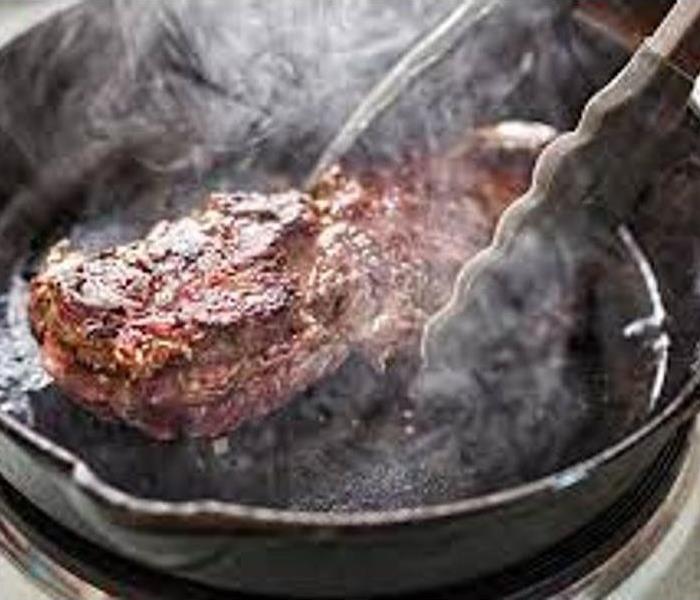What to Know about Protein Fires
1/11/2022 (Permalink)
 Protein fires occur most often as a result of frying, grilling, or sauteing, but they may happen any time you cook high-protein food.
Protein fires occur most often as a result of frying, grilling, or sauteing, but they may happen any time you cook high-protein food.
What Is a Protein Fire?
Although protein fire isn’t a well-known term, it’s one of the most common types of kitchen fires. A protein fire involves burning high protein foods like meat, fish, poultry, and eggs. They release grease and proteins into the air, often as a fine mist that coats surfaces throughout the kitchen.
One of the biggest problems with protein fires is that they don’t always have significant flames or heavy smoke. In fact, even just regular cooking can produce a heavy build-up of grease and soot in the kitchen. Protein fires occur most often as a result of frying, grilling, or sauteing, but they may happen any time you cook high-protein foods.
What Are the Signs of a Protein Fire?
The signs of protein fire may be after burning food, but they also will build up over time.
- Persistent meat or grease smells that become rancid over time
- Sticky surfaces that are nearly impossible to clean
- Yellowish to brown stains that form drip-like patterns
- Brown or black soot stain that seems to appear after cooking
Why Cleaning up a Protein Fire Is Difficult
While you will notice burned food, it is easy to overlook the risk of protein fires because of the lack of flames and heavy smoke. As a result, the grease and soot residue of protein fires often go unnoticed for weeks or even months. Even if there is a significant flair-up or smoke, the risk of protein fires goes overlooked unless there is flame damage.
The grease and soot will build up over time and lead to yellowish-brown stains and rancid, meaty odors. By the time you see or smell the signs of a protein fire, the stains are set in and difficult to clean.
The grease not only seeps into porous surfaces but also discolors most surfaces. The grease and soot along with other dirt and dust create a sticky layer that most regular cleaners cannot cut through. Even with repeated cleaning and deodorizing, protein fire stains and smells will remain.





 24/7 Emergency Service
24/7 Emergency Service